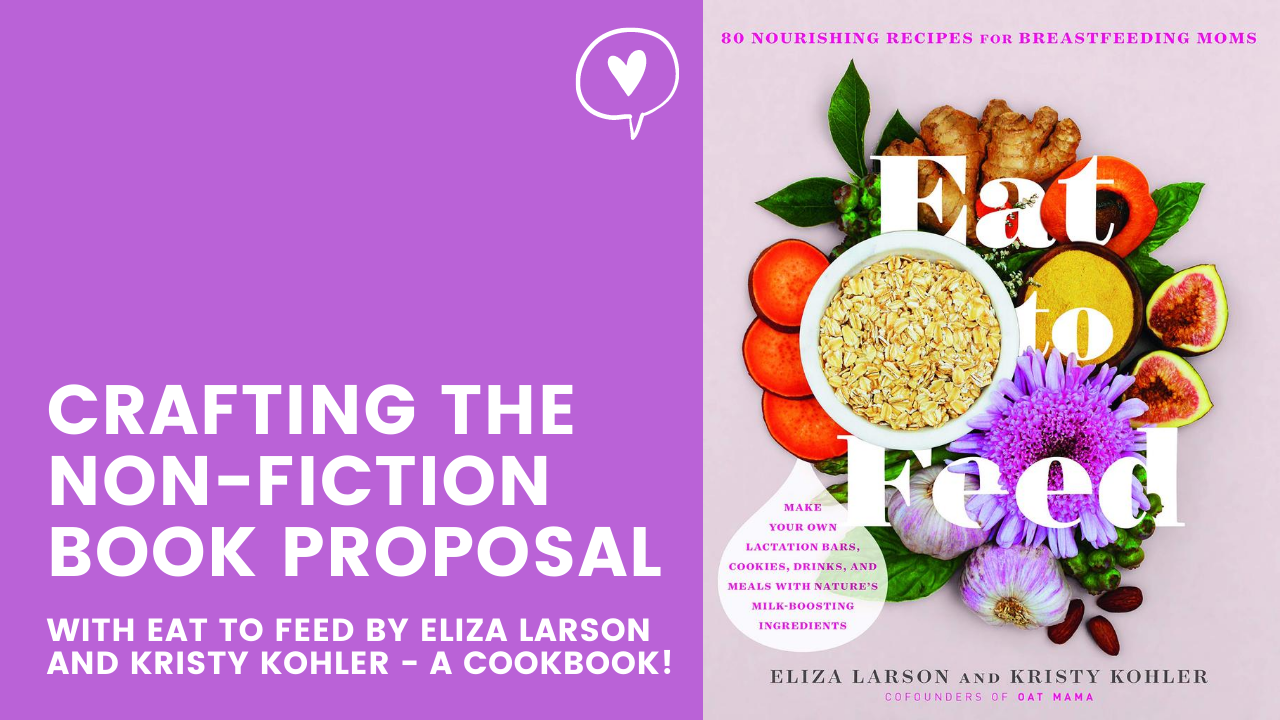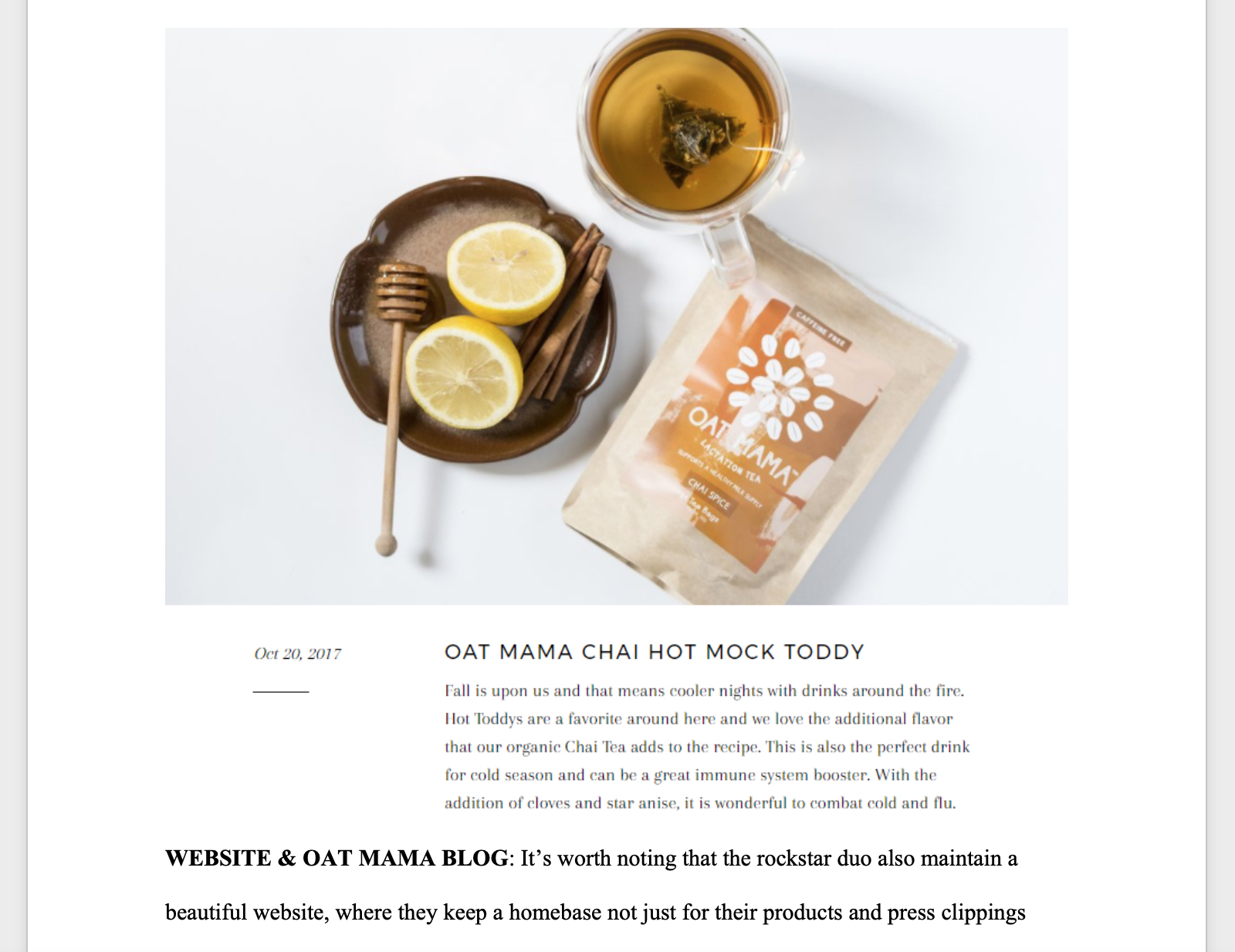Crafting the Non-Fiction Book Proposal With Kristy Kohler and Eliza Larson and Eat to Feed
Hey there non-fiction writers!
I’ve said it before on here, and I’ll say it again. Navigating the world of non-fiction can be tricky! Agents and editors always ask for a proposal, but what do they look like? How do you know what goes in one? What if you’re missing crucial-
Breathe.
Like I’ve done before with Alex Rubens’ 8-Bit Apocalypse and Sam Slaughter’s Are You Afraid of the Dark Rum?, today we are going to breakdown an actual non-fiction book proposal for a client’s project I sold. Now, this isn’t a proposal the clients put together on their own, but one I wrangled up with them as a team. It was a group effort, like many proposals are.
Are YOU expected to have something this detailed right out of the gate? Not really. This was a project I was seeking authors out for, as opposed to one they pitched to me. But if you do have it ready when you’re pitching, it’s certainly something in your favor. This wonderful book published in July of last year with Da Capo Press, and is a cookbook detailing recipes for breastfeeding mothers.
First, as always, a few quick disclaimers!
Remember how subjective this all is. What works for me as an agent, might not work for someone else. There are some great additional proposal guides written up by Jane Friedman, Brian Klems at Writer’s Digest, and Nathan Brandsford. Learn as much as you can.
Make sure you are reading agency guidelines before sending anything. An agent might want something ENTIRELY DIFFERENT. But I imagine a lot of what we are going to dig into here, such as author platform, proposed contents, sample pages, etc… will be across the board for everyone who requests a proposal.
And last, if this helps, please consider picking up a copy of Eat to Feed. Kristy and Eliza put a lot of their hearts into this beautiful project. And if this is helpful, buy me a coffee! The cafe near my house is open again!
Alright. Let’s dig in.
THE BASICS
I’ve said this in previous proposals blog posts, but when it comes to crafting a really great non-fiction book proposal, there are a few sections you should have in every single one. In my opinion, the breakdown should look a little something like this, and we’ll dig into each of these in a minute, and how they apply to working on a cookbook:
About the Book: Exactly what it sounds like. What’s the jacket copy look like? What is this book?
Meet the Author: Let’s get to know you.
Author Publicity & Platform: It’s time to name drop. What’s your platform like, where do you write, who will support your book, what are your numbers? This could also just tie into the Meet the Author section, though if you have a lot to dig into, break it off. Give us a whole section.
Comparative Titles: What books would yours sit with in bookstores? What book would fans of your book, also potentially like? This section is notably missing from this proposal.
Potential Media Relevance: Covering a topic that gets dug into in the media? Shows us a bit about that, if possible.
Manuscript Overview & Proposed Contents: What you’ve got so far, and where you see the work going. Word count? Well, that can vary greatly. We’ll dig into that too.
Now, when it comes to non-fiction proposals, there will sometimes be sections that are pretty specific to that kind of proposal. Since we’re focusing on a cookbook, there’s going to be a whole section dedicated to photography. We did this in Sam Slaughter’s Are You Afraid of the Dark Rum as well. Obviously if you’re writing an essay collection or a memoir you might not have a breakdown of your food photography. I guess it depends on the memoir, though.
And you’ll also note this proposal had no comparative titles. It was a very rare moment when I felt like we didn’t need any, as there were barely any books like this one on the market. And I stressed that fact.
Now, let’s break down these sections a bit more. I’ll include summaries of what we discussed in the proposal as well as some screenshots, which I hope will give you a helpful overview of what goes into one of these.
ABOUT THE BOOK
You know that query letter you’ve been polishing up? With your jacket-copy-esque writing that describes the book you’ve spent all these many months / years on? Well, this is yet another place to let that writing shine.
In EAT TO FEED, we opened up the proposal with an introduction that talked about the two creators, and what their brand has been doing. We even had a cute photo of one of their wholesome bars that they sell through their store as the opening image.
After-all, a big part of Eat to Feed, was that it was being written by two women who made the exact things inside the book, and sold them through their company. It was a large part of their platform, and we’ll talk more on that later.
The rest of the quick two-page About the Book section digs into what readers will see in the book (“…from full dinners like pesto barley salad with roasted tomatoes to savory spreadable snacks like roasted pumpkin seed butter, to delicious takes on drinks like their ice chocolate sesame almond milk.”) and who the book is for (breastfeeding mothers).
It’s quick and to the point, just as any good jacket copy is.
Also hi, note the title change? NEVER BE MARRIED TO YOUR TITLES. They are always subject to change. We even knew this one might change, and labeled it “Working Title” throughout the proposal packet.
ABOUT THE AUTHOR
Whenever I talk about query letters, I like to quote other agents who say it’s all about the “hook, book, cook.” The marketing blip that snags you in, the jacket-esque description of the book, and the cook, aka, you! The chef behind the pages.
This, is your author bio.
For Eliza and Kristy’s bio, we spent three pages doing this.
Talk about them together, as partners in Oat Mama.
Talking about them apart, and what they individually brought to the project, such as how Eliza was the photographer, and bringing up her career as such.
It was a little longer for a quick Meet the Author section, but these two have done a lot together and individually! There was a lot to say.
PUBLICITY AND PLATFORM
Ah, here we go. The section everyone hates to talk about.
Before I jump into this, I want to remind you… it’s never too late to build a platform. You don’t need a million social media followers (though hey, that would be nice!), but you should have something to establish that you are the expert on your topic. In the case of Eliza and Kristy, they had:
An established brand they were building their book off of, Oat Mama.
A large following on social media accounts like Instagram and Pinterest.
A significant newsletter subscriber base.
A ton of press surrounding what they’ve done.
When it comes to this book and these authors, they built their own platform. They created their website, their brand, their store… this is a book connected to all of that. For them, platform was tied to this, as opposed to a huge social following… though that certainly helped!
We pressed the fact that they owned their platform too, pointing out their lovely blog and the following they had developed around it and their products.
MEDIA & MARKET
You can’t always have a section like this, but in the case of this book, it was easy. So many outlets had been talking about lactations cookies and bars over the course of the year. Different meals, shakes, and the like. And many of them, lucky for us, talked specifically about the Oat Mama team, linking to their recipes!
This allowed us to build out a nice section that showed off media outlets talking about what the book would cover, helping us show relevance. We even dug into a specific news story centered around the Starbucks “pink drink” (remember this?) in 2017.
Which helped us showcase how the media covered this particular topic, when attached to a trend.
MANUSCRIPT OVERVIEW + PROPOSED CONTENTS
And here’s the big one, and arguably the most important part of the puzzle… what’s in the actual book, and samples of your writing.
I’ll note this, I’ve heard varying things about word count in non-fiction proposals. Some say a few thousand words, some say a quarter of the book. As always, pay attention to submission guidelines. Me? I like to see at least 10,000 words before I offer on anything, and like to think that’s a safe bet for anyone else working on a proposal like this one.
For this proposal, we broke down the contents, and then listed all the recipes and fun instructional tidbits we planned on sharing in the cookbook. It wasn’t enough to just have a bundle of recipes. We had fun facts, instructions on how to grow sprouts, all kinds of great bits that make a cookbook really great.
Cookbooks that are just recipes aren’t interesting. Cookbooks that tell a story? Those are. And this book had a story to share.
We were also sure to share recipes with big beautiful photos. I had to zoom this one out to fit it here on the blog.
We shared five different recipes with full color, beautiful photos.
And afterwards, in the final section of the proposal, showed off more sample photography from one of the co-authors of the book.
And there you have it. A non-fiction cookbook proposal. If you found this helpful, do consider ordering the book from your favorite bookseller.
At the end of the day, the proposal ended up being 30 pages long, but I’ve seen proposals be much longer. Dish as much as you have to, to get the point of your book across, AND why you are the right person to write it.
Good luck out there!








